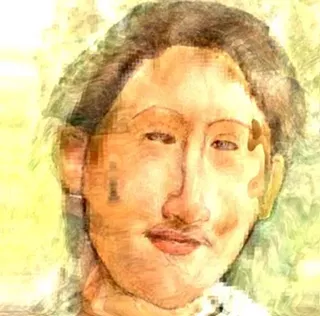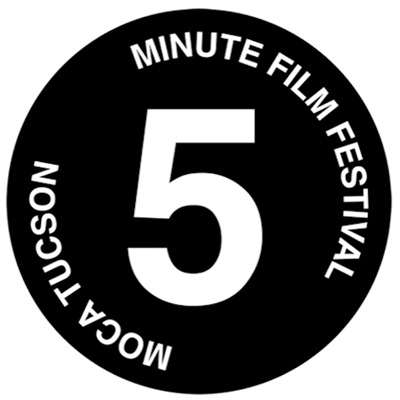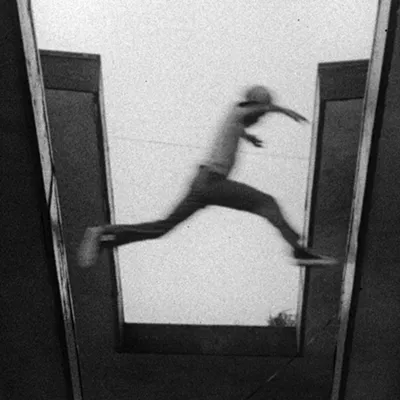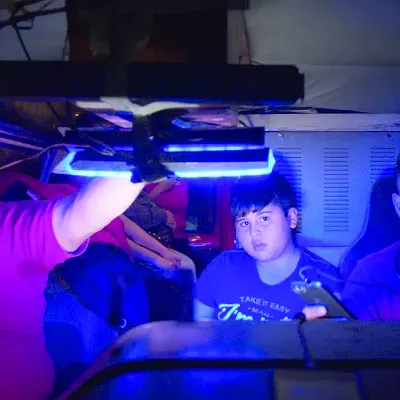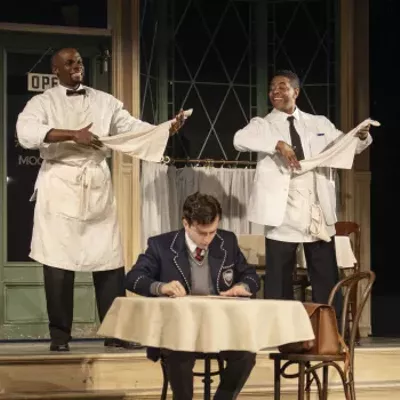Club Q is the subject of a short documentary by Kristen Wolf, the first item to be screened in this year's Lesbian Looks film and video series. Club Q advertised itself as a "dance party for women"; think of Lesbian Looks as its cinematic equivalent, a film party for women.
"One really gratifying thing about this to me is that it's become a scene, something that people look forward to and talk about," says Beverly Seckinger, the festival's director. "The most exciting moment was a year or two ago, when I discovered invitations to a Lesbian Looks after-party that students had Xeroxed and sent around. Suddenly, Lesbian Looks was a thing! It wasn't just this evanescent once-it's-over-nobody-thinks about it event. It's a cultural institution."
Seckinger co-founded Lesbian Looks in 1993, and every fall, she takes over the UA's Modern Languages auditorium for a series of free screenings of films by and about lesbians. There are documentaries and narrative pieces, shorts and feature-length efforts, polished productions and valiant low-budget efforts.
It's the most popular public-outreach effort of the UA's Committee on LGBT Studies, which otherwise focuses more on academic conferences, speakers and research. "When we invented Lesbian Looks, we just pulled out a catalog from Women Make Movies (a distributor), picked out a few things, Xeroxed some flyers and packed the Modern Languages auditorium," Seckinger recalls. "Over the years, it's transformed from this sight-unseen programming method to a jurying process, where we solicit what looks interesting from other festivals and distributors, and we put out a general call for work. We look at 150 titles or so, to cull down to what we can show over three Saturday nights."
This year, three big boxes of submitted videotapes confronted Seckinger and her fellow judge, Joan Schuman, the Tucson Weekly's own Ms. City Week.
Seckinger says that the quantity of lesbian filmmaking has vastly expanded in the past 10 years, thanks to the development of cheap but high-quality recording and editing tools. Quality is another matter, yet Seckinger says she never has trouble filling the Lesbian Looks schedule with good material. The most popular subjects among lesbian filmmakers these days, she says, are the transgender movement and gay families with children, but somehow, this year's Lesbian Looks has wound up skirting those issues. With other media outlets like Cinemax running documentaries on gay families, that's one less topic Seckinger's series has to dwell on.
How gay and lesbian topics are being covered elsewhere in the media has a direct influence on the Lesbian Looks programming.
"There seem to be gay characters all over TV, and there is certainly a lot more gay material in feature films than 10 years ago," says Seckinger. "But on the whole, it's not work made by and for this community. That's what we need to show here--smaller-scale things that aren't on TV, or even at the Loft or Casa Video. We're looking for work in the greatest variety of styles and subject positions, by race, by age, by life experience, to demonstrate the diversity of this community and not have some univocal thing going on."
The series' success is not just a matter of programming, either. "A niche screening venue like Lesbian Looks can really serve this population in a special way," she says. "Men and straight people come to the screenings, too, and that's great, but for the rest of us, you feel, 'Wow, that's me up there on the screen,' whether you're a multiply pierced and tattooed 19-year-old or an older person."
Lesbian Looks opens Sept. 20 with two documentaries. Club Q: The Legendary Dance Party for Women traces the rise of that electric, eclectic lesbian club. No Secret Anymore: The Times of Del Martin and Phyllis Lyon examines the careers of the two activists who in 1955 helped found Daughters of Bilitis, America's first public organization for lesbians. "We were considered illegal, immoral and sick," one of them recalls, and they devoted their careers to changing each of those attitudes. Martin and Lyon went on to work in many other civil rights organizations, and oddly enough were eventually criticized as being "assimilationists," people working within the system rather than smashing it.
Oct. 4 brings a "Cornucopia of Shorts," including Camouflage Pink, about a "tough, militant dyke (who) wants to go to the prom in a girlie pink dress and mush contend with her own feelings of identity and conformity"; Peeling, about a teenage girl's internal struggle to come out; and Butch Mystique, which considers "the joys and tribulations of African American butch/stud women, and the femmes they love."
Central to the Oct. 18 finale is the 81-minute feature Robin's Hood, in which an iconoclastic social worker teams with a dashing butch bank robber in a search for social justice and true love.
The only generalization that can be made about this line-up is, the longer the film, the more traditional its style.
"Over the years, our audience has learned to watch a bigger range of stuff, more experimental stuff, and so on shorts night, there are a lot of interesting pieces that people will sit through because they're only four or five minutes long," says Seckinger. "Our biggest bomb was (Ulrike) Ottinger's Joan of Arc of Mongolia. That cleared the Modern Languages auditorium. So I learned we should probably not schedule a feature-length experimental film for this audience, but we can do almost anything we want with the shorts."

